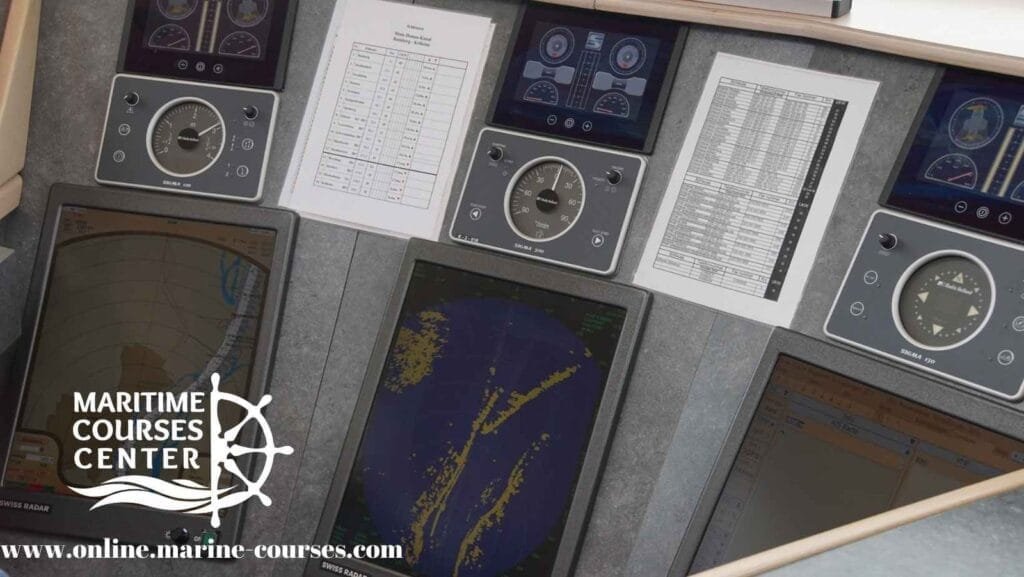
Different Types of Alarms on Ships: Ensuring Safety at Sea
A maritime voyage can quickly turn into a challenging situation, and it’s during these times that the importance of ship alarms becomes evident. Ship emergency signals and alarms play a crucial role in efficiently managing crises and preventing emergencies at sea. These alarms are strategically positioned throughout the vessel’s various systems and machinery to alert the crew about potential dangers arising from various types of onboard emergencies. In this article, we will delve into the different types of alarms found on ships, highlighting their significance in maintaining safety and order during critical situations.
Table of Contents of Alarms on Ships
- Introduction
- Types of Alarms on Ships
- General Alarm
- Fire Alarm on the Ship
- Man Overboard Alarm
- Abandon Ship Alarm
- Navigational Alarm
- Machinery Space Alarm
- Machinery Space CO2 Alarm
- Cargo Space CO2 Alarm
- Ship Security Alarm System
- Importance of Recognizing Alarms
- Conclusion
- Frequently Asked Questions
Types of Alarms on Ships
1. General Alarm on Ships
The general emergency alarm on a ship is a universally recognized signal that signifies an immediate threat or crisis. This alarm is characterized by 7 short ringings of the bell followed by a long ring or by using the ship’s horn signal of 7 short blasts followed by 1 long blast. The purpose of the general alarm is to alert the crew about emergencies such as fire outbreaks, collisions, groundings, or scenarios that require abandoning the ship. Once activated, every member of the crew must follow muster list instructions and proceed to designated muster stations, prepared to take necessary actions.
2. Fire Alarm on the Ships
In the event of a fire detected on the ship, crew members are responsible for raising the alarm by pressing the nearest fire switch or loudly shouting “FIRE FIRE FIRE.” The ship’s fire alarm signal comprises continuous ringing of the electrical bell or the ship’s horn. Crew members must proceed to fire stations, confirm the fire’s location, and perform duties as per the assigned team and muster list.
3. Man Overboard Alarm on the Ships
For situations where a person falls overboard, the man overboard alarm is activated. This alarm includes three long rings of the internal alarm bell and three long blasts of the ship’s whistle. Additionally, ships in the vicinity are alerted using the whistle blasts. A man overboard signal equipped with light and smoke can also be thrown into the water to attract attention.
4. Abandon Ship Alarm on the Ships
When a situation onboard becomes untenable, and the ship is no longer safe, the abandon ship alarm is sounded. This signal involves more than six short blasts and one prolonged blast on the ship’s whistle, along with the general alarm bell. Crew members are instructed to carry lifejackets and additional items as per the muster list and await further orders from the master.
5. Navigational Alarm on the Ships
Navigation equipment failures are critical on a ship, and navigational alarms help address them promptly. These alarms are triggered when equipment malfunctions, and they provide specific details about the affected equipment and the problem. Crew members must assess the situation and take corrective actions.
6. Machinery Space Alarm on the Ships
The ship’s engine room houses various machinery under constant monitoring. Alarms in this space are activated when machinery malfunctions, displaying the problem on the control room alarm panel. Crew members respond by locating the fault and rectifying it.
7. Machinery Space CO2 Alarm on the Ships
In the engine room, a CO2 fixed fire extinguishing system is installed. The audible and visual CO2 alarm is distinct from other ship alarms, signifying the activation of the firefighting system. The alarm activates upon opening the CO2 release cabinet door.
8. Cargo Space CO2 Alarm on the Ships
Cargo spaces also have a fixed firefighting system with unique alarms. These alarms are distinguished from others on the ship and activate when the firefighting system is in use.
9. Ship Security Alarm System on the Ships
As per SOLAS regulations, ships are equipped with a ship security alert system (SSAS) to alert coastal authorities in case of a pirate attack. Unlike other alarms, the SSAS does not sound onboard; instead, it notifies relevant authorities via a satellite system.
Importance of Recognizing Alarms on the Ships
Understanding the various ship alarms is critical for crew members to respond effectively during emergencies. Each alarm has a specific purpose and set of actions associated with it. Familiarity with these alarms allows crew members to react swiftly and efficiently, potentially averting disasters and ensuring the safety of all on board.
Conclusion
Ship alarms are the backbone of maritime safety, serving as the first line of defense during emergencies. These alarms, ranging from fire alerts to man overboard signals, play a pivotal role in guiding crew members through crisis situations. By recognizing and comprehending the significance of each alarm, seafarers can ensure a safer and more secure maritime environment.
Frequently Asked Questions
- Why are ship alarms important? Ship alarms are vital for alerting the crew about emergencies and enabling them to take swift actions to mitigate risks and ensure safety.
- How does the general alarm work on a ship? The general alarm is sounded with 7 short bell ringings followed by a long ring or using the ship’s horn signal of 7 short blasts and 1 long blast. It signifies a ship-wide emergency.
- What is the purpose of the man overboard alarm? The man overboard alarm is activated when someone falls overboard. It alerts the crew onboard and nearby vessels to initiate rescue operations.
- How does the navigational alarm function? Navigational alarms are triggered by equipment failures in the navigation bridge. They provide details about the malfunctioning equipment to assist crew members in resolving the issue.
- What is the significance of the ship security alarm system? The ship security alarm system (SSAS) is essential for alerting coastal authorities in case of pirate attacks. It ensures timely communication without compromising onboard safety.




8 Comments